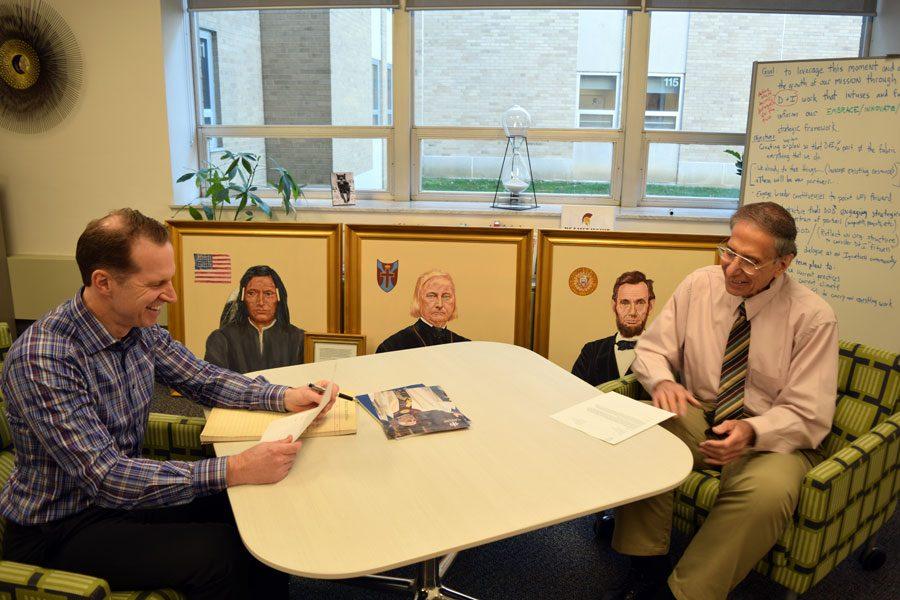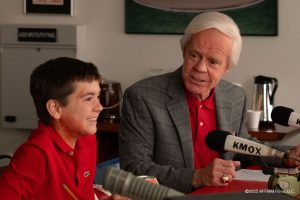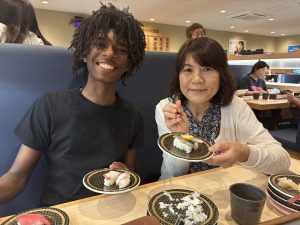The Jesuit muse
English teacher creates portraits to unite Christian, patriotic ideals
English teacher Carl Evola discusses plans for his paintings during a meeting with President Corey Quinn March 3.
March 31, 2017
It is fashionable today to point out the flaws in America’s national heroes. English teacher Carl Evola prefers to focus on their virtues.
Evola’s 43rd year of teaching was interrupted last October for medical reasons. On his road to recovery, he completed portraits of three men: Father Pierre Jean De Smet, S.J., former President Abraham Lincoln and Indian Chief Bonaventure Shizoumish. In doing so, Evola hoped to reignite a faded connection.
“It’s about bringing out a sense of identity,” Evola said, “both having a sense of who are we when we say ‘We are De Smet’ and being a part of a larger Catholic and American community,”
But it was not until two years ago that Evola understood that identity for himself. He had read four biographies about De Smet, and through them uncovered the appreciation that Native Americans had for the missionary and his work. According to Father John J. Killoren, S.J., in his book “Come, Blackrobe”, at a time when the natives were judged negatively by some, De Smet saw them as men.
To depict the Native American history in Jesuit tradition, Evola painted Bonaventure Shizoumish, a chief of the Coeur d’Alenes Indians and one of the many natives that De Smet baptized.
De Smet, the defender of Indians, found a common ground with the emancipator of slaves, Abraham Lincoln, as well. Lincoln invited De Smet to Washington on numerous occasions in order to consult with him regarding Indian affairs.
“In most triptychs [a set of three works intended to be appreciated together], the two side panels are smaller than, or subordinate to, the central image,” Evola said. “I made all three of my portraits the same size. You know these are three different men at three different levels of society, but, because all people are created in the image and likeness of God, all are equal. I think that is what Fr. De Smet is teaching us.”
To Evola, the paintings’ display, which is planned to be in the new library, has the potential to establish a new fashion; one that sheds light on the virtues of national heroes like De Smet.
“In a small way,” Evola said, “I hope the paintings might do that.”








